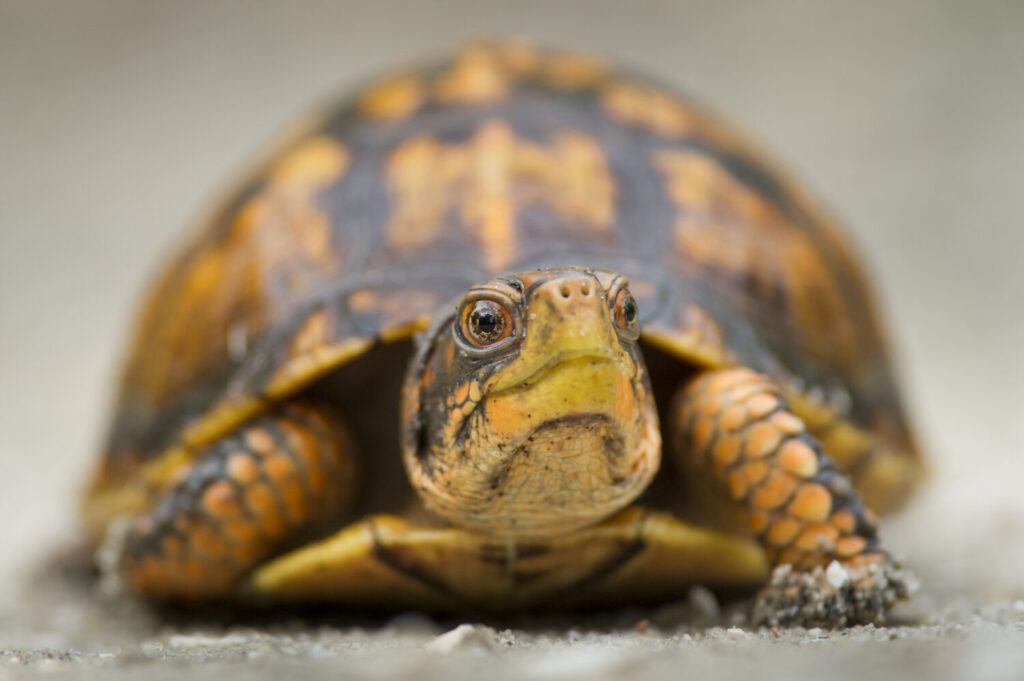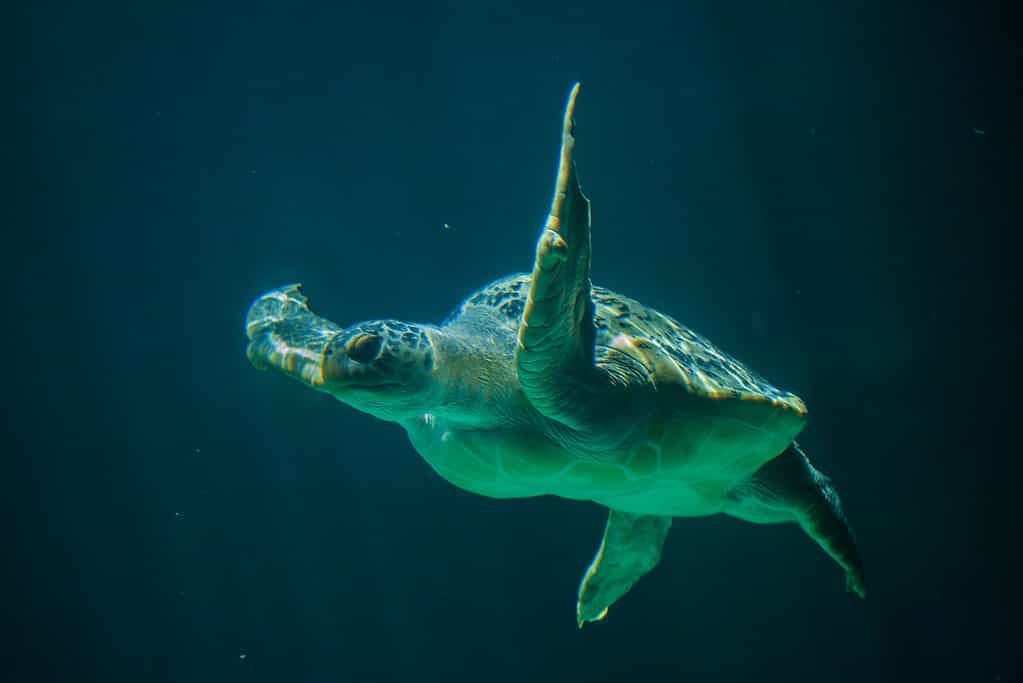Turtles make up a fascinating corner of the animal kingdom. Experts estimate that there are 357 species of turtles still living on nearly every continent except Antarctica. Both their physiology and their adaptability to survive in water and on land make them unique. In addition to their shelled skeletons, researchers have long puzzled over turtles’ eyes. How well do they see? Do they see color? Recently, much research has centered on whether turtles can see in the dark. So, let’s dive in!
Eye Anatomy

The eyes of a turtle function much like ours.
©Ray Hennessy/Shutterstock.com
For most species of turtle, their vision is specialized for underwater navigation. Turtles possess flat corneas and a curved lens that combine for exceptionally clear, farsighted vision while underwater. Above water, turtles become more nearsighted but still see fairly clearly.
The core structures of turtle eyes aren’t too dissimilar to human eyes. Both are made up of rods (for low-light vision and movement detection) and cones (for bright-light vision and color detection). Creatures that see well at night inherently have more rods than cones. Most species of turtles possess equal ratios of cones to rods. This structure, along with a turtle’s large pupil (in comparison to the rest of its eye), means that turtle eyes see best in dim-to-bright light.
So, Can Turtles See in the Dark?

Turtles can see in the dark, but not as sharply as true night vision.
©iStock.com/N-sky
Yes, but in a similar way that humans can. Turtles do not possess true night vision and instead rely on their ability to perceive motion, shapes, and silhouettes in dim light. A turtle’s vision drops in quality the darker it gets. However, most turtles sleep at night and, therefore, don’t need sharp night vision.
Relying on the Dark

Similar to turtles that primarily live on land, sea turtles have limited abilities to see in the dark.
©wrangel/iStock via Getty Images
Some turtles depend on darkness and low-light conditions for survival despite not being able to see well. Many species of sea turtles only create nests and lay eggs in the dark. Because of this, they are greatly impacted by artificial lights that may shine on their nesting beaches, such as those from resorts, condos, and other human structures built near the beach.
These lights also impact the just-hatched baby turtles, whose instincts drive them towards the brightest light. In a natural world, the moon and stars reflecting off the ocean would shine the brightest. But when attracted by man-made lights, hatchlings waste the little energy they have moving away from the ocean, and many die as a result.
What the Experts Say

Scientists are still studying turtles and the ways they navigate the world.
©Dennis Diehl/Shutterstock.com
According to Florida Atlantic University graduate researcher Sam Trail, “[Turtles’] vision is not meant for darkness… based on how their eye is shaped and the anatomy… we know that for the most part, they’re built for bright light conditions.” Trail’s research specifically involves the difference in light sensitivity between different species of sea turtles, as well as what that means for endangered species.
The photo featured at the top of this post is © iStock.com/mynewturtle
Thank you for reading! Have some feedback for us? Contact the AZ Animals editorial team.







